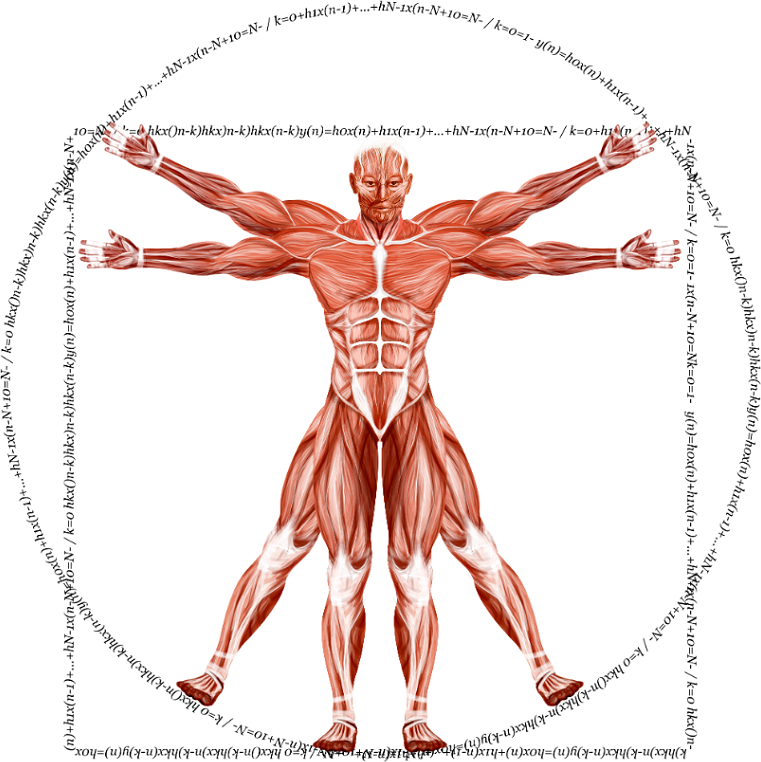10 Best Back Exercises for a Wider, Stronger Frame
EMG study reveals the top moves for maximum back muscle engagement
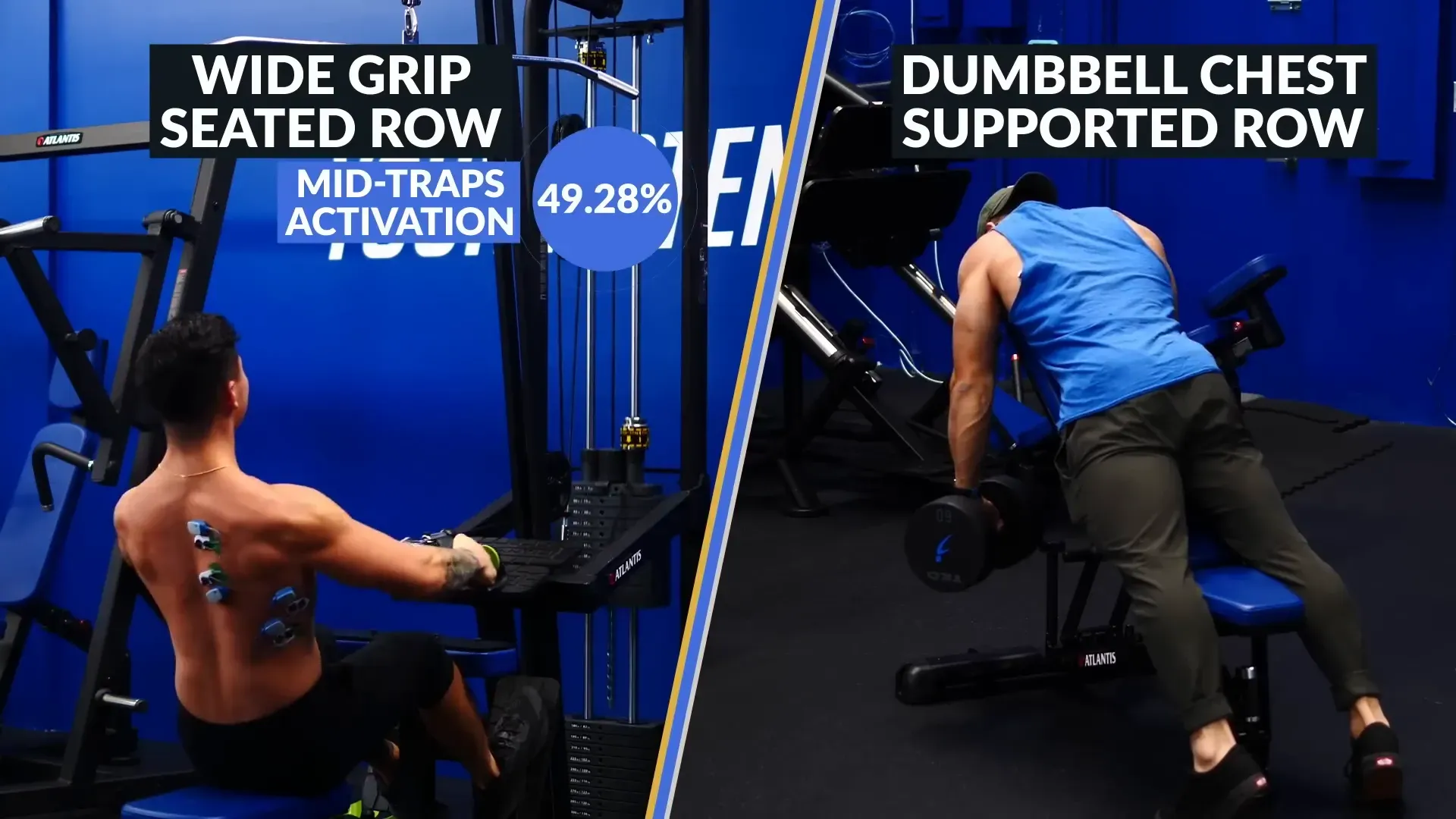
Key Takeaways
- Compound Exercises are King: Deadlifts and bent-over rows proved to be the best overall back exercises, activating multiple muscle groups effectively for maximum strength and growth.
- Target Different Muscle Groups: A balanced back workout should include exercises for the lats, mid-back, and lower traps to ensure comprehensive development and stability.
- The Importance of Muscle Activation: Exercises that promote high muscle activation are likely to deliver better strength and growth, making them prime candidates for your back routine.
- Personalization Matters: Grip variations and targeted movements help tailor exercises to individual goals, maximizing back development for all fitness levels.
- Consistency Over Complexity: Sticking to proven exercises with proper form and consistency yields better results than constantly changing routines.
Want bigger, stronger back muscles? You're in the right place.
Our team of experts, including a veteran exercise scientist with over 20 years of hands-on experience, has analyzed every detail of effective back training.
In this article, we review, critique, and expand on Jeremy Ethier's guide to back training. We'll show you exactly which exercises activate your back muscles most effectively, backed by electromyography (EMG) data and practical experience. No fluff, just what works.
Whether you're new to training or have years under your belt, you'll discover proven strategies to build more muscle, boost your strength, and create that impressive V-taper you're after. Our science-based approach helps you train smarter, not just harder.
Related:
- 4 Back Workouts for Muscle Hypertrophy (Top 13 Exercises)
- Getting Back in Shape with Dr. Muscle: My First 14 Days
- 4 Upper-Body Hypertrophy Workouts (11 Best Exercises)
In a Nutshell—The Best Back Exercises for Growth: Tested and Proven
• Focus on mastering form and adjusting grip variations to target specific areas like the mid-back and lats.
• Incorporating a balanced mix of compound and isolation exercises ensures comprehensive back engagement.
• Exercises like wide-grip seated rows and prone Y raises help target the upper and lower back, supporting shoulder stability and strength.
Beginners can benefit from accessible movements like inverted rows, while advanced lifters can push their limits by adding more weight and challenging variations. Remember, consistency and proper form are key, so prioritize these elements in your training to build a powerful, well-rounded back.
| Key Concepts | Application |
|---|---|
| Deadlifts & Rows: Core back builders | Use these exercises as staples to activate multiple back muscles for overall strength. |
| Muscle Activation: Improves workout efficiency | Choose high-activation exercises for optimal back growth and muscle engagement. |
| Full Back Development: Essential for balance | Balance compound and isolation moves to cover upper, mid, and lower back areas. |
| Grip Choice: Targets specific muscles | Overhand grips focus mid-back; underhand grips engage lats more effectively. |
| Prone Y Raises: Key for lower traps | Add this move to stabilize shoulders and improve posture with minimal weight. |
| Form & Consistency: Foundation of progress | Prioritize correct form, stay consistent for gradual strength gains and balanced development. |
Introduction to Back Training
A well-developed back is not only aesthetically impressive but also foundational for overall body strength. The back plays a crucial role in supporting other muscle groups, maintaining good posture, and preventing injuries. Despite this, back training is often neglected compared to more visible muscle groups like the chest or arms.
A comprehensive back workout should be a part of every fitness enthusiast’s routine. Not only does a strong back improve functional strength, but it also enhances other lifts, such as squats and deadlifts, by providing the necessary support and stability. A balanced physique is incomplete without a strong and defined back. This article will guide you through the best back exercises for growth, focusing on both effectiveness and ease of execution.
Understanding Back Muscles
The back consists of several major muscle groups, each contributing to different aspects of strength and posture. The latissimus dorsi (commonly known as the lats) is the largest muscle in the back, responsible for giving it width and helping to create the coveted V-taper look. The trapezius muscles (traps) are also significant and crucial for upper back thickness.
Additionally, the rhomboids and lower traps play vital roles in shoulder stability and overall upper body strength. The erector spinae, a group of muscles running along the spine, is essential for maintaining good posture and providing spinal support. Understanding how these muscles work together is key to effective training and maximizing your gains.
The Importance of Muscle Activation
Muscle activation is a critical factor in back training. It determines how effectively you can engage specific muscles during exercises. High activation leads to better muscle growth, improved endurance, and increased strength gains.
Using tools like muscle activation measuring machines can provide insights into which exercises activate specific muscles the best. This data-driven approach helps tailor workouts to maximize effectiveness.
A Massive Back Experiment
Meet the Test Subjects
To gather reliable data, Jeremy and his team recruited a diverse group of subjects, including experienced lifters, beginners, men, and women. Each subject brought a unique perspective and experience level to the table.
Having such a mix of participants allowed us to understand how different people respond to various exercises. This diversity is crucial for creating routines that are effective for everyone, ensuring that the best back exercises for men and women alike are identified and utilized.
Preparing for the Experiment
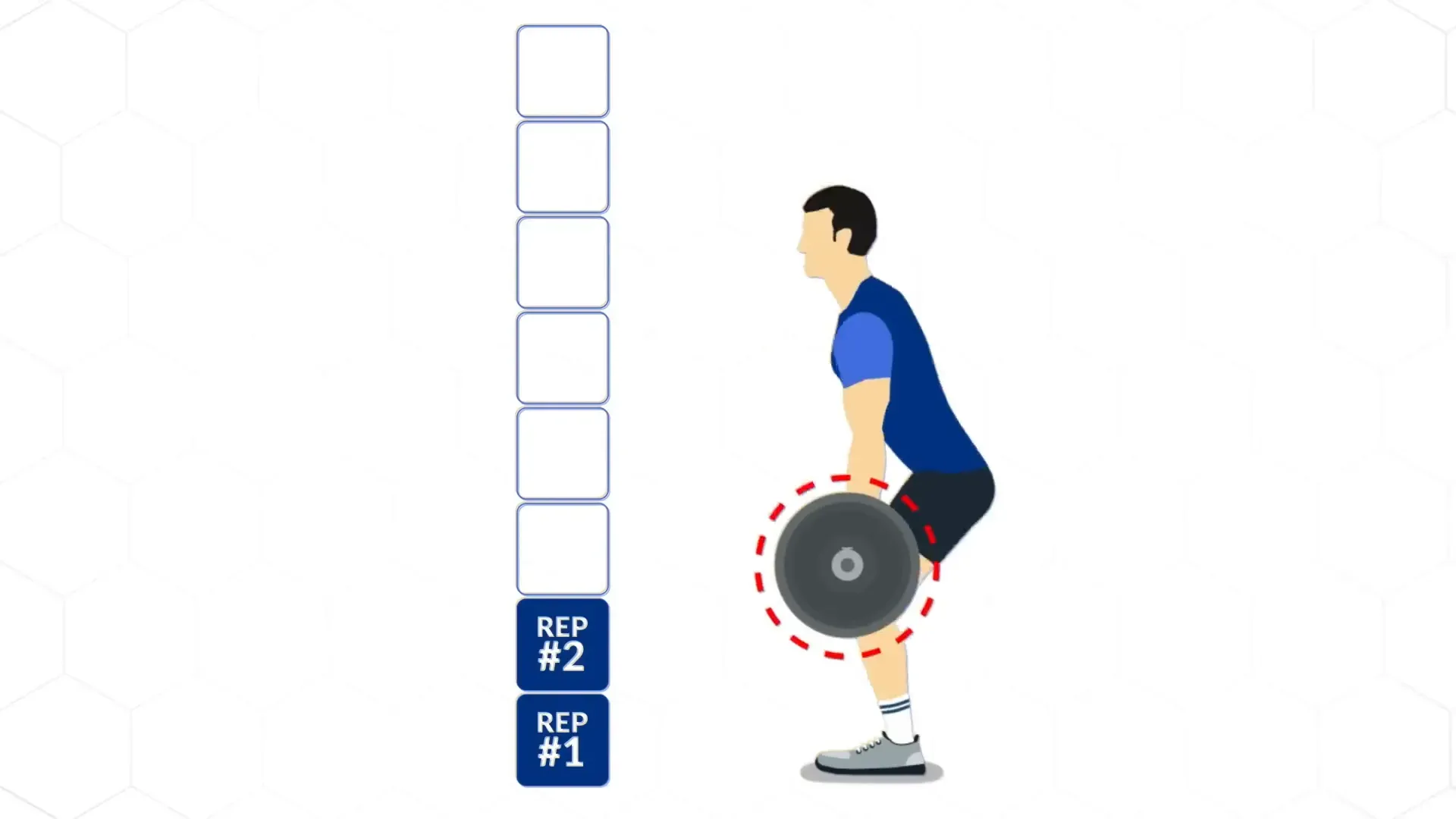
Preparation is key to a successful experiment. Before testing, they ensured that all subjects used the same weights for each exercise. Consistency was vital for obtaining accurate muscle activation readings, allowing us to assess which exercises were genuinely effective across a wide range of body types and strength levels.
They spent considerable time determining the ideal weights to ensure every subject would reach near failure after five reps. This approach allowed them to accurately measure muscle activation across different individuals, making our findings more reliable.
Controlling Variables in Testing
Controlling variables is an essential component of any experiment. In testing, they focused on three main factors: exercise difficulty, sensor placement, and individual muscle activation ability. Each subject performed the exercises under similar conditions to ensure valid results.
They also measured maximum voluntary contraction (MVC) for each subject. MVC helps compare muscle activation levels accurately, allowing us to determine how well each exercise worked relative to each subject’s maximum potential.
The Testing Phase
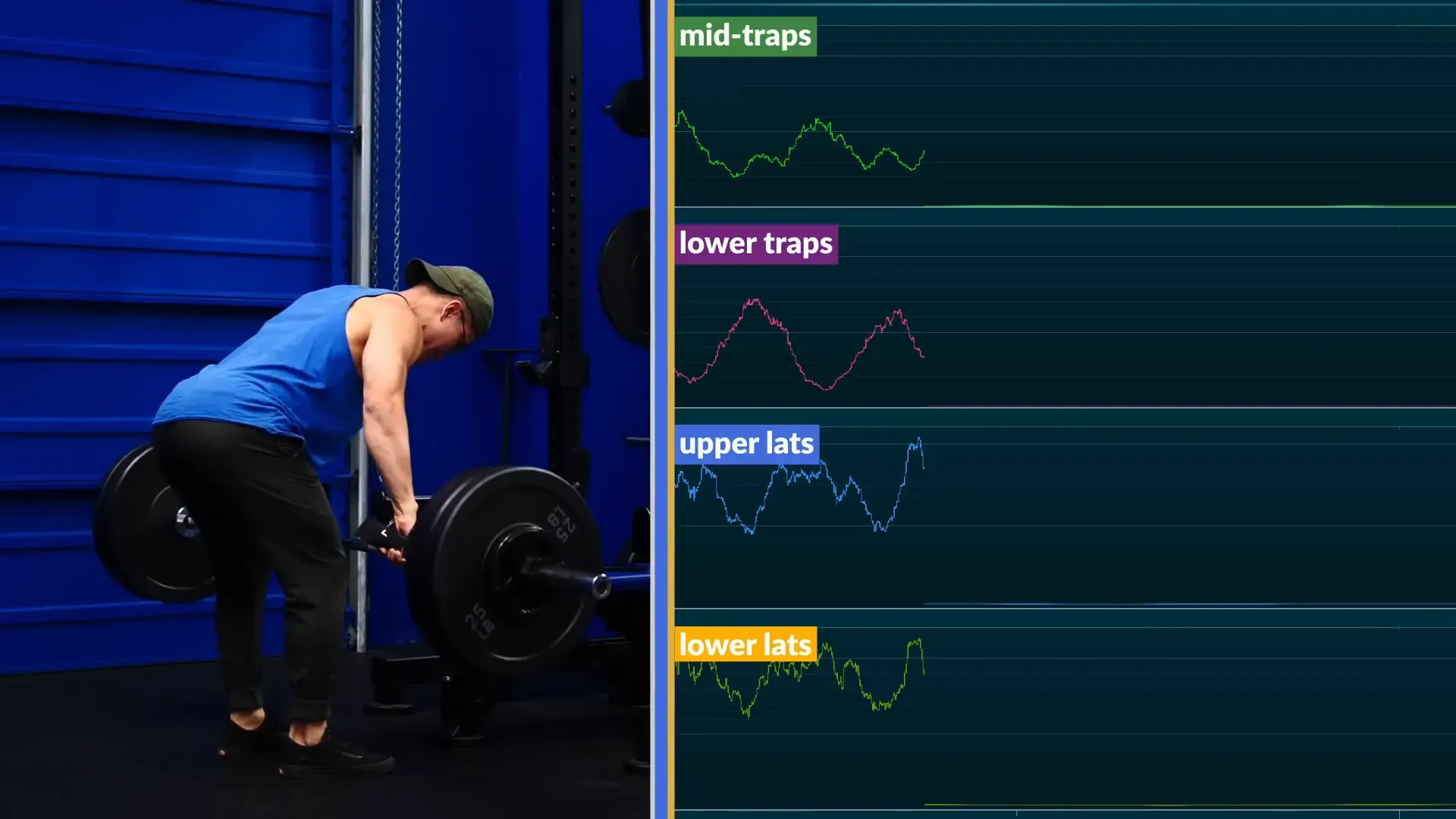
The testing phase was critical to our experiment. Jeremy and his team aimed to determine which best back exercises for growth delivered the highest muscle activation. Each subject performed a series of exercises while we precisely measured their muscle activation levels.
To ensure fairness, they standardized the weights for each exercise. This meant that every subject used the same weight relative to their strength level, allowing us to accurately compare the results across different individuals.
Exercise Selection
A mix of exercises targeting various back muscles was selected, including both compound and isolation movements. Compound exercises like deadlifts and bent-over rows were crucial for overall activation, helping to work multiple muscle groups simultaneously for maximal efficiency.
Isolation movements, such as face pulls and prone Y raises, allowed us to focus on specific muscles. This blend of exercises ensured that we covered all the bases during our testing and achieved a balanced assessment of back training.
Testing Methodology
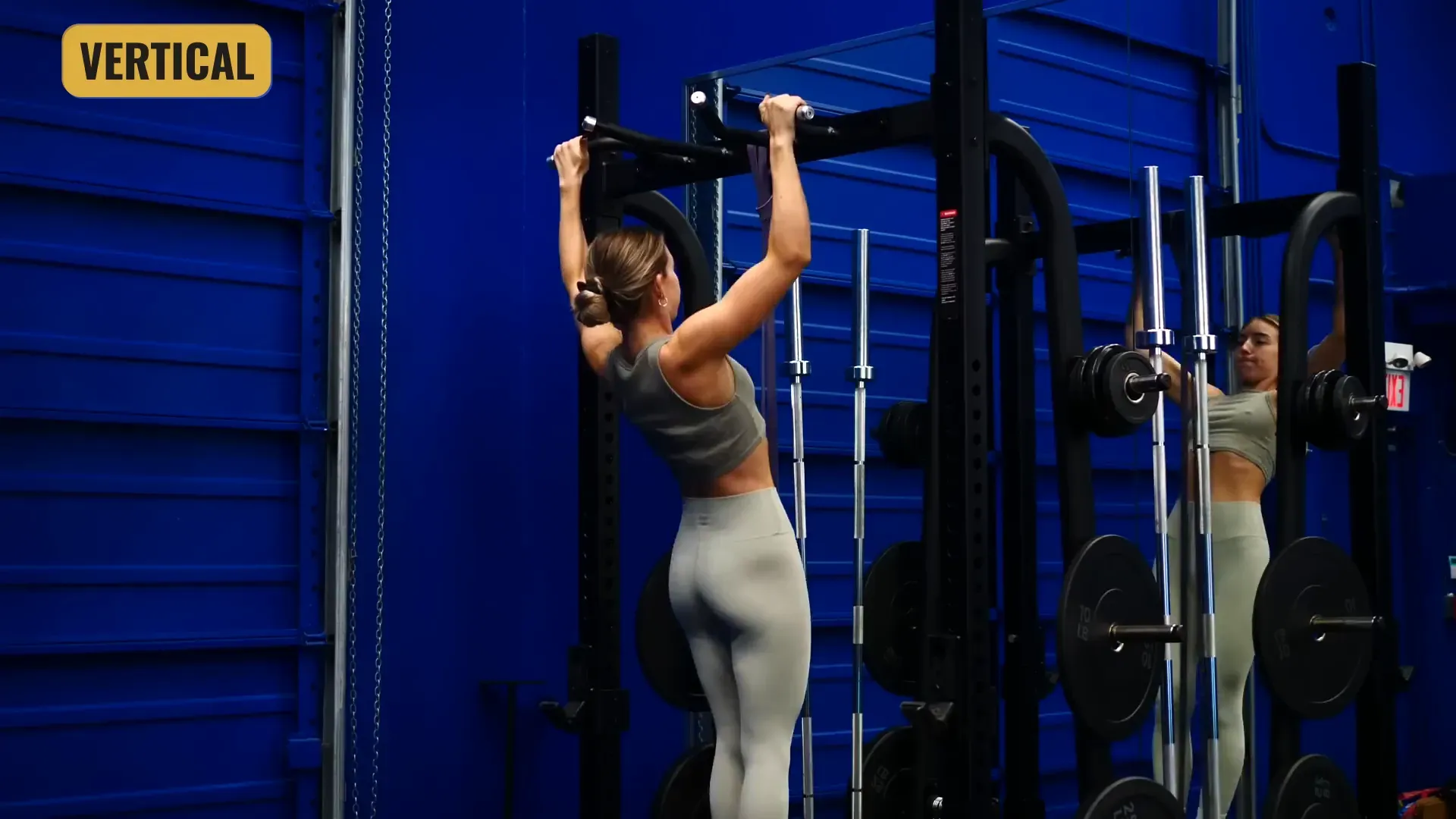
Each subject performed one set of five repetitions for each exercise. After each set, they rested for at least five minutes to prevent fatigue from skewing the results.
They also rotated between horizontal and vertical pulling exercises. This rotation helped to avoid overly fatiguing the same muscle groups, ensuring more reliable data collection and providing insights into how these different pulling movements affect overall muscle activation.
Analyzing the Data
After completing the tests, they analyzed the data by averaging activation levels across all subjects. This provided a clearer picture of which exercises performed the best overall.
While muscle activation does not always equate directly to muscle growth, the findings aligned with existing research. They discovered some surprising results that challenged common beliefs about back training, particularly the effectiveness of certain compound movements.
Key Findings from Jeremy's Experiment
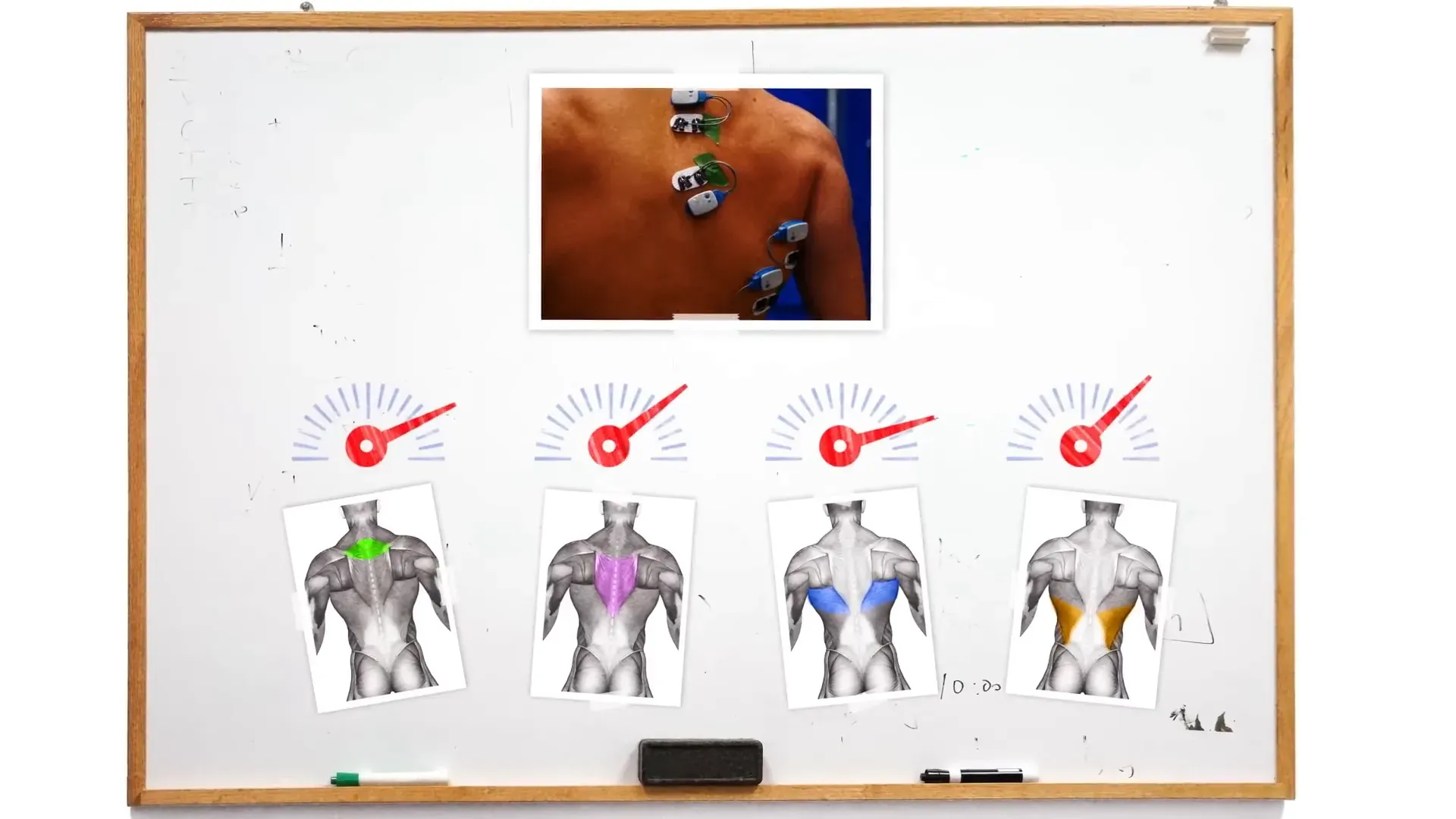
The data revealed two standout exercises for overall back building: deadlifts and bent-over rows. Both exercises demonstrated high activation across all tested muscles. This was unexpected, especially for the deadlift, which many consider primarily a leg exercise.
Interestingly, the bent-over row's grip had a significant impact on muscle engagement. The overhand grip activated the mid-back more, while the underhand grip targeted the lats. Understanding these nuances is essential for tailoring workouts based on individual goals.
Overall Back Builders: Top Exercises
When it comes to overall back builders, two exercises stood out clearly. These exercises not only activated the back muscles effectively but also contributed significantly to overall strength and stability.
- Deadlifts: Surprisingly high activation across all muscle groups, providing an effective full-body workout.
- Bent-Over Rows: Excellent for mid-back and lat activation, depending on the grip used.
Both exercises are fundamental components of any effective back workout, making them ideal for best back exercises for men or women routines. They engage multiple muscle groups, promoting overall back development and muscular balance.
Other Noteworthy Exercises
While deadlifts and bent-over rows topped the list, several other exercises also showed promise. Inverted rows performed well for beginners and women, providing a solid activation level without needing heavy weights.
Wide-grip seated cable rows and dumbbell chest-supported rows also ranked highly. These exercises are great for targeting the mid and upper back, especially when performed with proper form.
Moreover, reverse flye and dumbbell deadlift are also some of the best back exercises with dumbbells that you can add in your routine as these can provide the extra activation needed for balanced development.
Mid and Upper Back Exercises
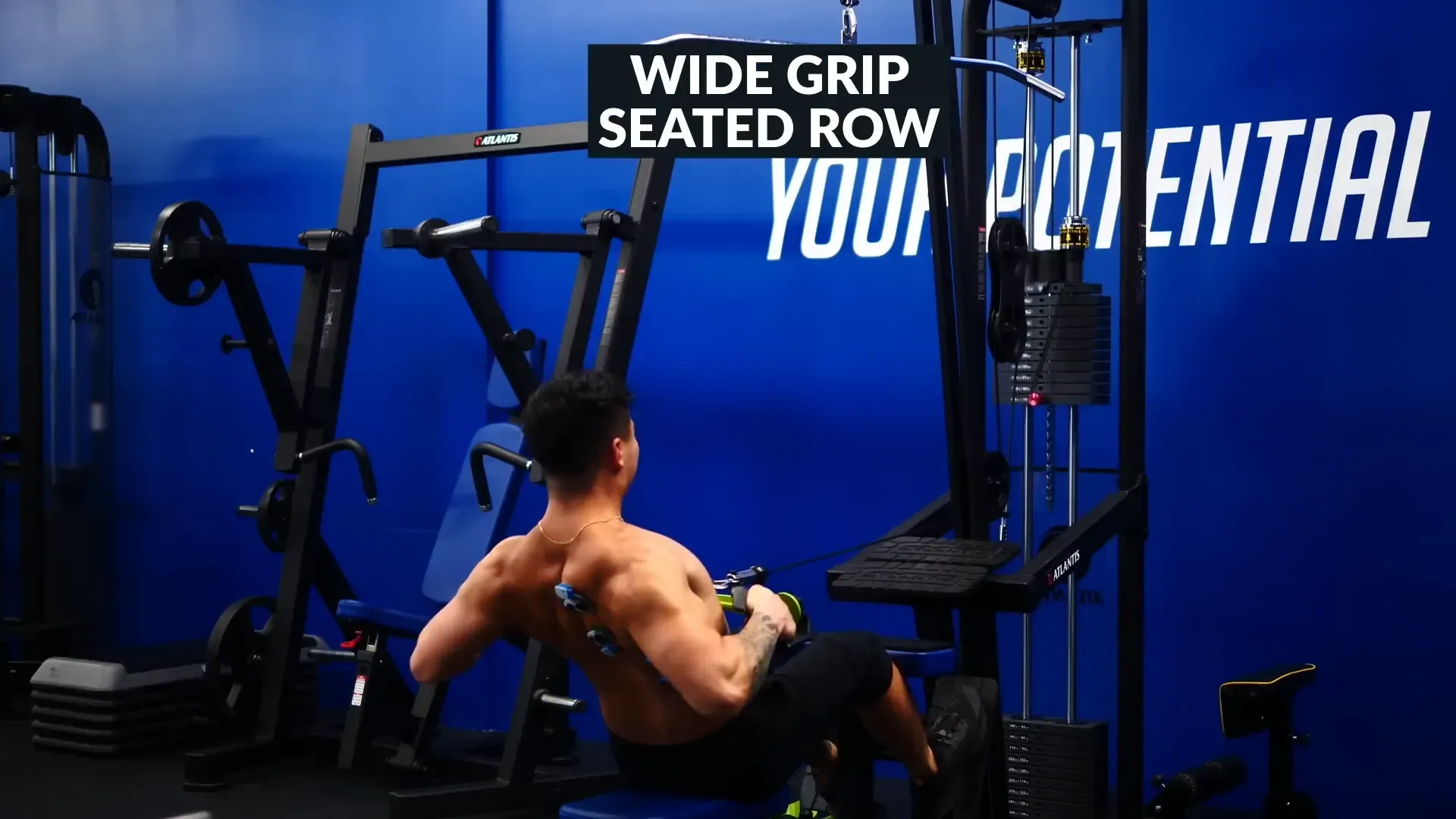
The mid and upper back play a crucial role in creating a balanced physique. Strengthening these areas enhances posture, boosts overall upper body strength, and helps prevent injuries. Here are some of the best back exercises for the upper back:
- Inverted Rows: Great for beginners, targets the mid-back effectively.
- Wide-Grip Seated Cable Rows: Excellent for mid-back activation and developing thickness.
- Dumbbell Chest-Supported Rows: Focuses on the upper back, ensuring shoulder stability and improved muscle endurance.
Incorporating these exercises into your routine can lead to significant improvements in overall back strength. Focus on maintaining good form to maximize muscle engagement and prevent injuries.
Focusing on the Lower Traps
The lower traps are often overlooked in back training. However, they are essential for shoulder health, stability, and creating a balanced physique. Including best lower back exercises that target this area can significantly improve your overall back strength and functionality.
One standout exercise for the lower traps is the incline prone Y raise. This movement requires no weights and effectively targets the lower traps.
To perform this exercise, lie face down on an incline bench. Raise your arms in a Y shape, squeezing your shoulder blades together at the top. This simple yet effective movement can yield great results for shoulder stability and lower trap activation.
Targeting the Lats
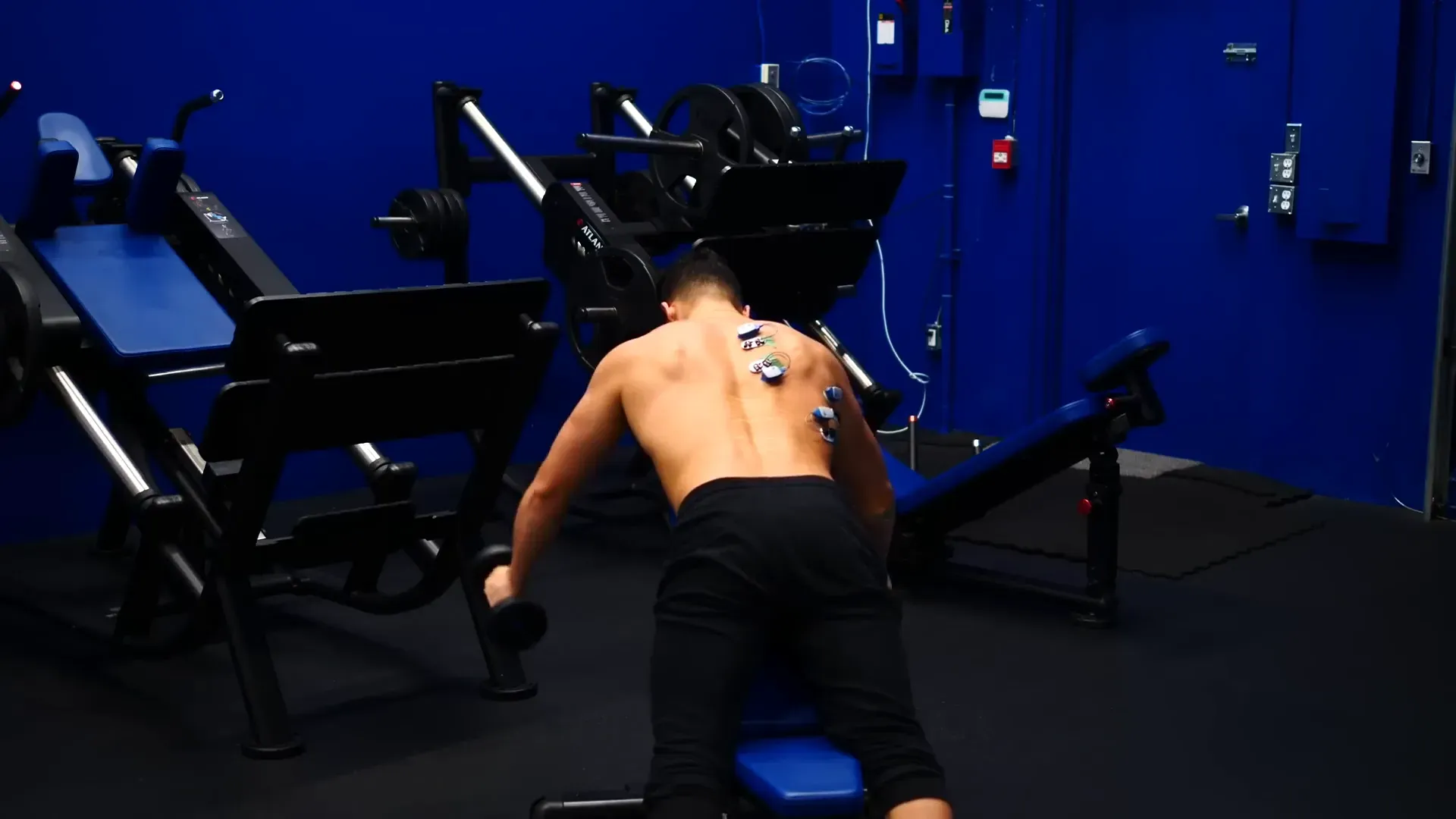
The lats are crucial for creating width in your back. They contribute to the V-taper look and are essential for improving overall back aesthetics. Here are the top choices for lat activation:
- Lat Pull-Downs: A classic for building lat strength and width.
- Pull-Ups: Excellent for overall lat development and an indicator of upper body strength.
- Lat Focus Row: A unique movement that positions the body for optimal lat engagement, allowing for maximum activation.
Incorporating these best back exercises for lat activation into your routine will lead to a well-rounded back workout. Focus on form and gradually increase weights to see the best results.
Creating Your Perfect Back Workout
Now that we’ve covered the best back exercises for growth, it’s time to create your perfect workout. A balanced back workout should include exercises targeting different muscle groups to ensure comprehensive development and reduce the risk of injury.
Start by selecting one exercise from each category we discussed: overall back builders, mid and upper back exercises, and lat-targeting movements. This approach provides a well-rounded routine that hits every major area of the back.
Here’s a sample structure:
- Overall Back Builder: Choose either deadlifts or bent-over rows.
- Mid and Upper Back: Incorporate inverted rows or wide-grip seated cable rows.
- Lat Activation: Opt for lat pull-downs or the lat focus row.
- Finisher: End with prone Y raises to target the lower traps.
This combination ensures you hit all major areas of the back effectively. Aim for three to four sets of each exercise, with 8 to 12 reps per set. Adjust weights to match your fitness level while maintaining proper form throughout each movement.
Sample Back Workout Plan
Below is a detailed sample workout plan for your back day:
- Deadlifts: 4 sets of 6-8 reps
- Wide-Grip Seated Cable Rows: 3 sets of 10-12 reps
- Lat Pull-Downs: 4 sets of 8-10 reps
- Inverted Rows: 3 sets of 8-10 reps
- Prone Y Raises: 3 sets of 12-15 reps
Make sure to warm up before starting the workout. Dynamic stretches and light cardio will prepare your muscles for the heavy lifting ahead. Also, cool down with static stretches to improve flexibility and aid recovery. Incorporate best stretching exercises for lower back as part of your cool-down to maintain mobility and prevent stiffness.
Practical Applications
- Focus on Compound Movements: Prioritize exercises like deadlifts and bent-over rows, which showed the highest muscle activation across the back. These exercises activate multiple muscle groups, maximizing efficiency and promoting balanced growth.
- Adjust Grip for Targeted Activation: For bent-over rows, use an overhand grip to focus on the mid-back and an underhand grip for better lat activation. Simple changes in grip can shift emphasis, helping target specific areas of the back.
- Incorporate Isolation Movements: Include exercises like prone Y raises and face pulls to target the lower traps and rhomboids, which are essential for shoulder stability. Aim for 3 sets of 12-15 reps with lighter weights to avoid overloading small stabilizing muscles.
- Balance Horizontal and Vertical Pulls: To ensure well-rounded back development, alternate between exercises like seated rows (horizontal pull) and lat pull-downs or pull-ups (vertical pull). This approach evenly distributes load and helps reduce muscle imbalances.
- Monitor Muscle Activation for Effectiveness: Use a combination of high-activation exercises as the foundation of your routine. Exercises with measurable activation levels, such as deadlifts (90%+ activation) and pull-ups (80%+ activation), are proven choices for growth.
Examples
- Balanced Back Workout
- Deadlifts: 4 sets of 6 reps
- Bent-Over Rows (Underhand Grip): 3 sets of 8-10 reps
- Lat Pull-Downs: 3 sets of 10-12 reps
- Prone Y Raises: 3 sets of 12-15 reps
- Isolation-Focused Workout for Beginners
- Inverted Rows: 3 sets of 10-12 reps
- Face Pulls: 3 sets of 12-15 reps
- Dumbbell Chest-Supported Rows: 3 sets of 10-12 reps.
Fact-Check of Key Points
- Muscle Activation and Growth: While muscle activation data offers valuable insights, it doesn't directly equate to muscle growth. High activation is one factor but doesn’t guarantee hypertrophy. Other factors like volume, intensity, and progressive overload are crucial for muscle development.
- Deadlifts as a Back Builder: Although deadlifts do engage the back muscles, they primarily target the posterior chain, including hamstrings and glutes. Many fitness professionals consider deadlifts as a total body lift rather than a specific back exercise, suggesting that relying solely on deadlifts for back development may not yield optimal results.
- Lower Trap Isolation Exercises: Prone Y raises are indeed beneficial for targeting the lower traps, but they are most effective at lighter weights and higher reps, as suggested. However, not all back workout routines require isolated lower trap exercises for most lifters, as these muscles are also activated in many compound movements.
- Generalizability of Findings: The article's testing included a range of participants, but the small sample size and control variables, like standardizing weight, may limit its applicability to all fitness levels. Beginners, in particular, may find different muscle activations due to less motor unit recruitment efficiency, potentially altering how exercises impact them.
Science of Back Exercises for Muscle Hypertrophy
Research on back exercises for muscle hypertrophy provides significant insights, especially through meta-analyses that evaluate the effects of exercise type, load, frequency, and volume on muscle growth. Here's a summary based on several key meta-analyses.
Key Findings
- Single vs. Multiple Sets
Multiple sets are more effective for muscle hypertrophy than single sets. A meta-analysis by Krieger (2010) found that performing multiple sets leads to approximately 40% greater hypertrophic effects than single-set protocols, with a positive dose-response relationship for higher set volumes (Krieger, 2010). - Exercise Order
The sequence of exercises, specifically starting with multi-joint exercises followed by single-joint exercises, may maximize strength gains in multi-joint movements without affecting hypertrophy outcomes. However, exercise order does not significantly influence hypertrophy itself, suggesting flexibility in how exercises are ordered for hypertrophy-focused training (Nunes et al., 2020). - Single-Joint vs. Multi-Joint Exercises
Both single-joint and multi-joint exercises contribute to whole muscle hypertrophy, with multi-joint exercises showing a slight edge in engaging more muscle mass. However, combining single- and multi-joint exercises may offer benefits by allowing targeted development of specific muscle regions (Rosa et al., 2022). - Resistance Training Load
The load intensity (e.g., low vs. high load) does not show significant differences in hypertrophic outcomes when training is taken to failure, suggesting that low and high loads are equally effective for hypertrophy as long as training is done to muscle fatigue (Lopez et al., 2020). - Training Frequency
Training frequency also affects hypertrophy, with twice-weekly training for major muscle groups being more effective than once-weekly frequency. However, more frequent training (three or more times per week) does not yield significantly different results compared to twice-weekly routines when total training volume is controlled (Schoenfeld et al., 2016).
Practical Applications
- Volume Matters: Using multiple sets per exercise session is more effective for muscle growth than performing single sets, with benefits increasing up to a moderate volume.
- Flexible Exercise Order: While hypertrophy outcomes are less dependent on exercise order, prioritizing multi-joint movements can benefit strength and is practical for those who want a mix of hypertrophy and strength gains.
- Incorporate Both Load Ranges: Low and high load training to failure are both viable for muscle hypertrophy, allowing flexibility in programming for variety and injury prevention.
Scientific Conclusion
Current meta-analytic evidence underscores the importance of training volume, flexible load intensities, and regular frequency in maximizing muscle hypertrophy in back muscles. Structured programs that combine various exercise types (single- and multi-joint) and maintain moderate-to-high frequency promote effective and sustainable muscle growth.
More Little-Known Tips for Optimizing Back Training
- Focus on Mind-Muscle Connection: Simply going through the motions won’t yield maximum results. To truly engage your back muscles, particularly the lats and mid-back, concentrate on the mind-muscle connection. Visualize pulling from your back rather than letting your arms take over. Studies suggest this mental focus increases muscle engagement by as much as 10%, boosting growth and endurance.
- Add Angles to Target Different Muscle Fibers: Back muscles are large and complex, with fibers running in different directions. Incorporating exercises that vary the angles, such as incline chest-supported rows or single-arm cable pulls, can activate neglected muscle fibers and improve overall back definition.
- Limit Momentum for Better Activation: Momentum can easily take over in pulling movements like rows or pull-downs, especially with heavy weights. Reduce momentum by moving with control, squeezing at the peak of the movement, and lowering the weight slowly. This slight change increases time under tension, promoting greater strength and growth.
- Use a Full Range of Motion for Improved Strength: Partial reps are common in back exercises, especially on exercises like pull-ups and rows. Use a full range of motion—from full stretch to full contraction—to work your muscles completely, enhancing both strength and flexibility in the back.
- Consider Grip Variations for Balanced Development: A simple change in grip—underhand, neutral, or wide—can shift muscle activation between different areas of the back. For example, an underhand grip on rows emphasizes the lower lats, while a wide grip targets the upper back more effectively. Experimenting with grip variations can help create a more balanced and developed back.
- Engage Core for Better Stability and Power: Many back exercises, like deadlifts and rows, demand a strong core for stability and safe lifting. Bracing your core during these movements not only improves form but also allows you to lift heavier, supporting better muscle activation and growth in your back.
- Add Isometric Holds for Endurance: For a more intense back workout, incorporate isometric holds at the peak of exercises like pull-ups, rows, and face pulls. Holding the contraction for 2-3 seconds can build muscular endurance and improve your overall strength, helping you progress faster over time.
My Opinion on Back Training
In my view, back training is often one of the most overlooked yet crucial parts of a balanced workout program. While it may lack the visual appeal of chest or arm workouts, I believe that training the back provides unparalleled support, strength, and stability. Exercises like deadlifts and rows are game-changers for anyone aiming to develop functional strength and overall body balance.
There’s a common perception that back workouts can be too complex, or that they don’t yield immediate, noticeable results. I can understand the frustration, but I believe these workouts are about playing the long game. Back exercises offer results that may be subtle at first but lead to a solid foundation that can improve every other area of strength training.
I often hear people say that since the back is out of sight, it’s easier to neglect. Personally, I see back training as an investment in strength and longevity, even if it’s less visually rewarding initially. A strong back supports and stabilizes other muscle groups, helping prevent injury and ensuring progress across other lifts.
Concluding on Back Training
Effective back training hinges on a well-structured routine that emphasizes compound lifts and strategic isolation exercises. As we explored, sticking to foundational exercises like deadlifts and bent-over rows yields the best results for strength and muscle activation, while smaller movements fine-tune stability and support. Whether you’re a beginner or seasoned lifter, focusing on consistent form and balanced muscle engagement will lead to noticeable progress in your back development.
To further enhance your back training, consider integrating variety into your routine. This can include different grip variations, tempo changes, or even incorporating resistance bands to challenge your muscles in new ways. Additionally, prioritizing recovery is just as important as the workout itself. Adequate rest, nutrition, and hydration are crucial for muscle repair and growth. By understanding the importance of these elements, you can create a sustainable and effective back training regimen that not only builds strength but also supports your overall fitness goals.
For an easier way to implement and track your routine, try the Dr. Muscle app. It automates exercise selection, progression, and even recovery timing, so you can maximize results without overthinking. Start with a free trial to experience it firsthand: Dr. Muscle Free Trial.
FAQ: Common Questions About Back Training
What is the best exercise for overall back development?
Deadlifts and bent-over rows are the top exercises for overall back development. Both engage multiple muscle groups effectively.
How often should I train my back?
Training your back 1-2 times a week is sufficient for most individuals. Ensure you give your muscles time to recover between sessions.
Can beginners do these exercises?
Yes, beginners can perform these exercises. Start with lighter weights and focus on mastering the form before progressing to heavier weights.
What should I do if I feel pain during back exercises?
If you experience pain during any exercise, stop immediately. Assess your form and consider consulting a fitness professional for guidance.
Is it necessary to include isolation exercises?
While compound movements are essential, incorporating isolation exercises can help target specific muscles, leading to a more balanced back.
What are the best back exercises for targeting the lats?
Lat pull-downs and pull-ups are excellent choices for targeting the lats. These exercises help create width and improve overall back aesthetics.
How can I improve my grip strength for back exercises?
Improving grip strength is crucial for effective back workouts. Consider using farmer's walks, dead hangs, and wrist curls to build grip endurance and strength.
